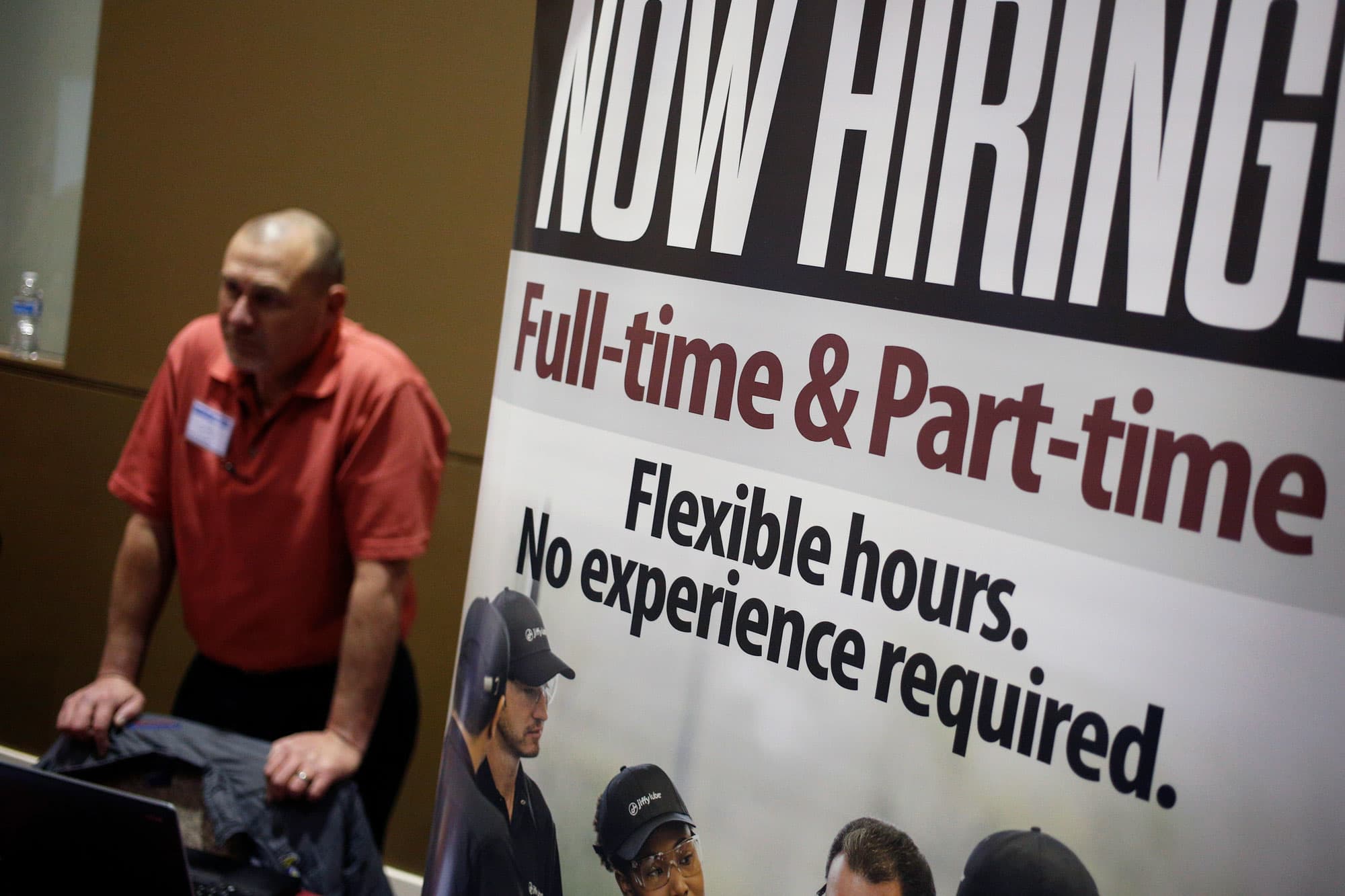A 'Now Hiring!' sign stands on display next to the Jiffy Lube International booth during a Job News USA career fair in Overland Park, Kansas.
Luke Sharrett | Bloomberg | Getty Images
The number of Americans filing applications for unemployment benefits fell more than expected last week, pointing to underlying market strength despite a sharp slowdown in job growth in May.
Initial claims for state unemployment benefits dropped 6,000 to a seasonally adjusted 216,000 for the week ended June 15, the Labor Department said on Thursday. Data for the prior week was unrevised.
Economists polled by Reuters had forecast claims would decrease to 220,000 in the latest week. The Labor Department said no states were estimated. The drop in claims followed three straight weekly increases.
Claims are being closely watched for signs of a rise in layoffs stemming from a recent escalation in trade tensions between the United States and China.
The trade war has increased uncertainty over the U.S. economic outlook, prompting the Federal Reserve on Wednesday to signal it could cut interest rates by as much as half a percentage point over the rest of this year. The U.S. central bank kept rates unchanged on Wednesday.
Fed Chairman Jerome Powell acknowledged the meager job gains in May and said "in light of recent developments this bears watching," but also noted that "many labor market indicators remain strong."
The four-week moving average of initial claims, considered a better measure of labor market trends as it irons out week-to-week volatility, rose 1,000 to 218,750 last week.
Last week's claims data covered the survey period for the nonfarm payrolls component of June's employment report. The four-week average of claims was little changed between the May and June survey period. Still, economists expect payrolls to pick up in June after increasing by 75,000 jobs in May.
Job growth has cooled from the brisk pace in 2018 in line with the economy, which is slowing as the stimulus from last year's massive tax cuts and increased government spending fades.
The Atlanta Fed is forecasting gross domestic product rising at a 2.0% annualized rate in the second quarter. The economy grew at a 3.1% pace in the January-March quarter, boosted by a temporary burst in exports and an accumulation of inventories.
Thursday's claims report also showed the number of people receiving benefits after an initial week of aid declined 37,000 to 1.66 million for the week ended June 8. The four-week moving average of the so-called continuing claims slipped 5,250 to 1.68 million.


